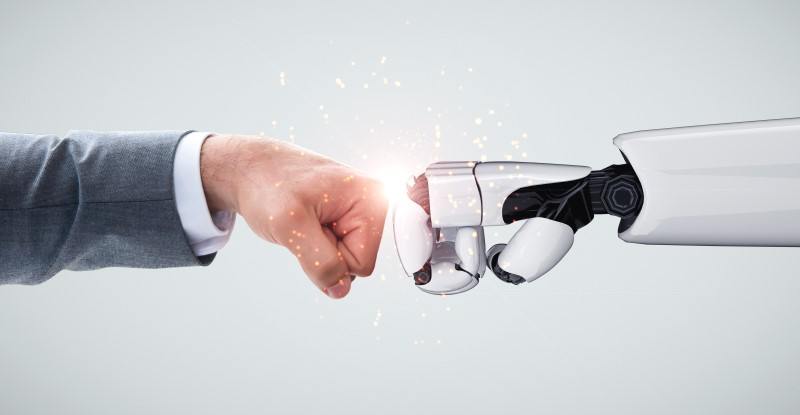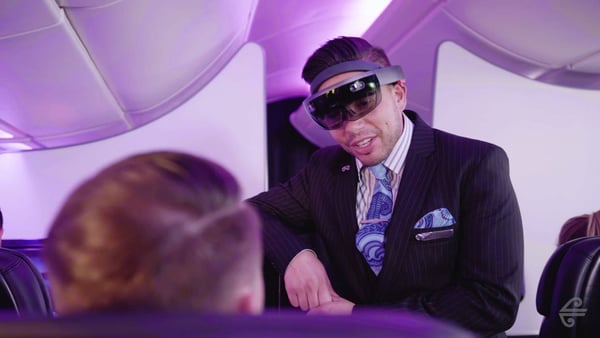
Albert Einstein, renowned physicist and crazy hairstyle pioneer, famously proclaimed that “our technology has exceeded our humanity.” It was a popular concern in an age where big advances were being made.
While times are more enlightened now, some techno-fear still remains. In the workplace it’s commonly based around a fear of robots taking over human jobs. But the reality is increasingly proving that technology is complementing humans, not replacing them.
For HR Managers, technology requires a fundamental change in how HR and IT staff communicate and collaborate. The personal expertise of HR teams must align with the technical acumen of IT teams. This connection will deliver the solutions that engage employees and drive the business.
These six HR technology trends are changing the world of Human Resources today – and will continue to do so beyond 2020.
- Employee tracking software – monitoring employees to preserve workplace health
- AI (Artificial Intelligence) – clever algorithms are improving processes and saving time
- Employee apps – consumer-grade tech delivers a richer, personalized experience
- Chatbots – instant information and improved service 24/7
- VR (Virtual Reality) and AR (Augmented Reality) – HR communication brought to interactive life
- Gamification – creativity and competition embed learnings
1. Employee tracking software
The COVID-19 crisis has placed a huge amount of pressure on workplaces to maintain a safe and healthy environment. The fear of infection spreading through workforces has resulted in the introduction of measures to minimize risk.
Tracking software has been released to help protect against the spread of viruses like COVID-19 and improve risk containment ability. An early example is Microsoft’s new contact-tracing app, CovidSafe. Another is the Working Well app from Castlight Health, which allows employers to forecast trends in their employees’ health and productivity. One analyst predicts the market for tracking software to be worth $4.3 billion.
As employee tracking software becomes more widespread, the tension will be balancing the benefits of protecting workplace health while preserving employee privacy.
2. AI (Artificial Intelligence)
If you’ve ever used the internet (and let’s face it, you’d have to in order to be reading this), you’ll already have experienced AI in action – maybe unknowingly. All the big online retailers and social platforms use AI-powered systems to deliver products and content matched to your interests.
That’s why you’re constantly seeing content about red shoes after having once looked at them on a shopping site. Analysts estimate that $6 billion has been invested into more than 1,000 AI start-ups in the last three years.
AI is making inroads into HR as well. It’s being used widely to reduce bias in applicant vetting and evaluation, improve identification of candidate skills and capabilities, and better match people with jobs.
In April 2018, DBS Bank launched Southeast Asia’s first AI-powered virtual bank recruiter, named Jim. By automating the pre-screening process, DBS expected Jim to save HR recruiters around 40 hours a month.
In healthcare HR, AI is helping to speed up patient service, improve medical record-keeping and monitor employee wellbeing.
3. Employee apps
Digital tech is shaping the way we speak with our employees. Through channels like app push notifications and personalized videos, nearly half of all communications are now digitally focused.
Employees have largely driven this trend. They want an experience at work that matches what they’re accustomed to in their personal lives. It’s something termed “consumer-grade”. A recent survey from Gartner reported that more than half of employees needed this type of experience to feel connected with their colleagues and workplace.
That’s why employee experience platforms have taken off. They allow staff to better understand the organization’s mission, find the information they need, collaborate and engage with content.
Delivering rich, personalized content has become essential to cutting through the noise and connecting with employees. Employee communication apps present vibrant, scannable content that employees can discover and interact with. That’s why they’re now driving tangible business results – and why the future will continue to see IT platforms integrate with HR management.
4. Chatbots
The sheer volume of messages sent via online platforms today means administrators could never hope to keep up. The value of chatbots lies in their fast handling of large volumes of questions, comments or complaints from users – whether they be customers, applicants or employees.
HR chatbots can provide employees with better service experiences. A survey by IBM found that 60% of workers are willing to seek advice from HR chatbots. During the COVID-19 pandemic, HR teams can populate chatbots with information around COVID-19 updates or working guidelines.
Integrating chatbots with your performance or learning management systems, for example, can help recommend courses to employees to help them develop relevant skills.
It’s an opportunity that was seized by Georgia State University, who created a chatbot-enabled student-advising system. Within three months of launch, the chatbot handled more than 200,000 questions. Since then, about 80% of students are engaging with the chatbot on a regular basis, sending an average of 70-80 queries each.
 (Image: Air New Zealand)
(Image: Air New Zealand)
5. VR (Virtual Reality) and AR (Augmented Reality)
Put aside any thoughts that it’s only for gaming – VR is a true game-changer for HR. After many years of unfulfilled promise, the technology has finally caught up to the hype for VR.
Where chatbots provide immediate text-based responses, VR offers a true multi-sensory experience as employees hear, sense and feel the environment around them in a virtual scenario. VR embedded into employee workstations could see teams holding 3D Zoom meetings in the near future.
The sky’s the limit for VR in Kiwi airline Air New Zealand, who have tested equipping flight attendants with augmented reality headsets to help them better understand passenger emotions.
One of the areas of HR where virtual and augmented reality are really delivering value is training. Many industries are discovering that employees learn and retain new skills better when training is delivered in a more immersive way. Companies in the manufacturing and industrial sectors are already using virtual reality systems for screening and training employees.
6. Gamification
Gamification is the marriage of traditional motivational techniques with modern game design. It’s a tool with the power to improve employee communications, enhance workplace learning and increase company morale. The possibilities are only limited by imagination and willingness.
Expect to see gamification become increasingly relevant as Millennials and Gen Z make up a larger proportion of our workforce. US research revealed that 78% of workers are using games-based tools to motivate staff.
Game-based learning is gaining in popularity as a format that’s fun and engaging. The appeal to employees of learning this way is boosting participation rates. Take the case of professional services giant Deloitte, who took gamification to the next level with their zombie apocalypse onboarding game.
If your organization isn’t quite ready for tackling the walking dead, an engaging but less demanding alternative is an employee quiz. It’s a flexible format that works for any subject, serious or frivolous.
Research conducted by Dell Technologies found that the work and learning environments of 2030 are already being shaped by the technology trends of today. The time to embrace new HR technology trends is now. Success is virtually assured.



